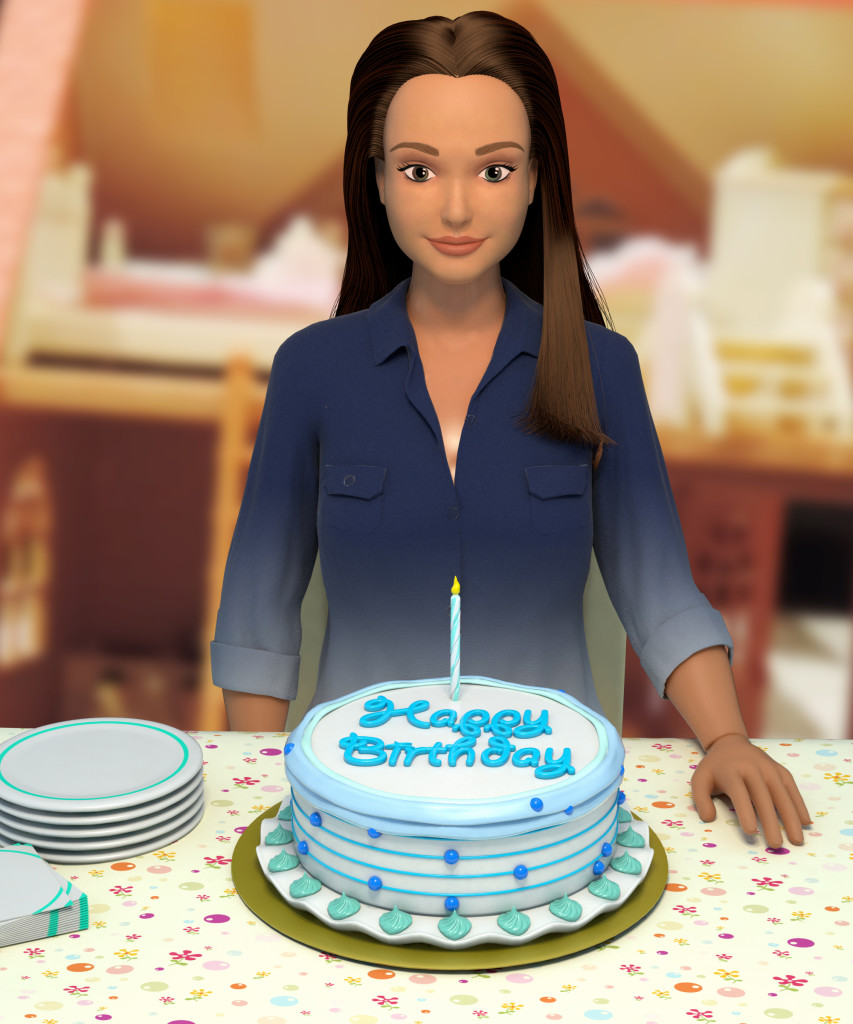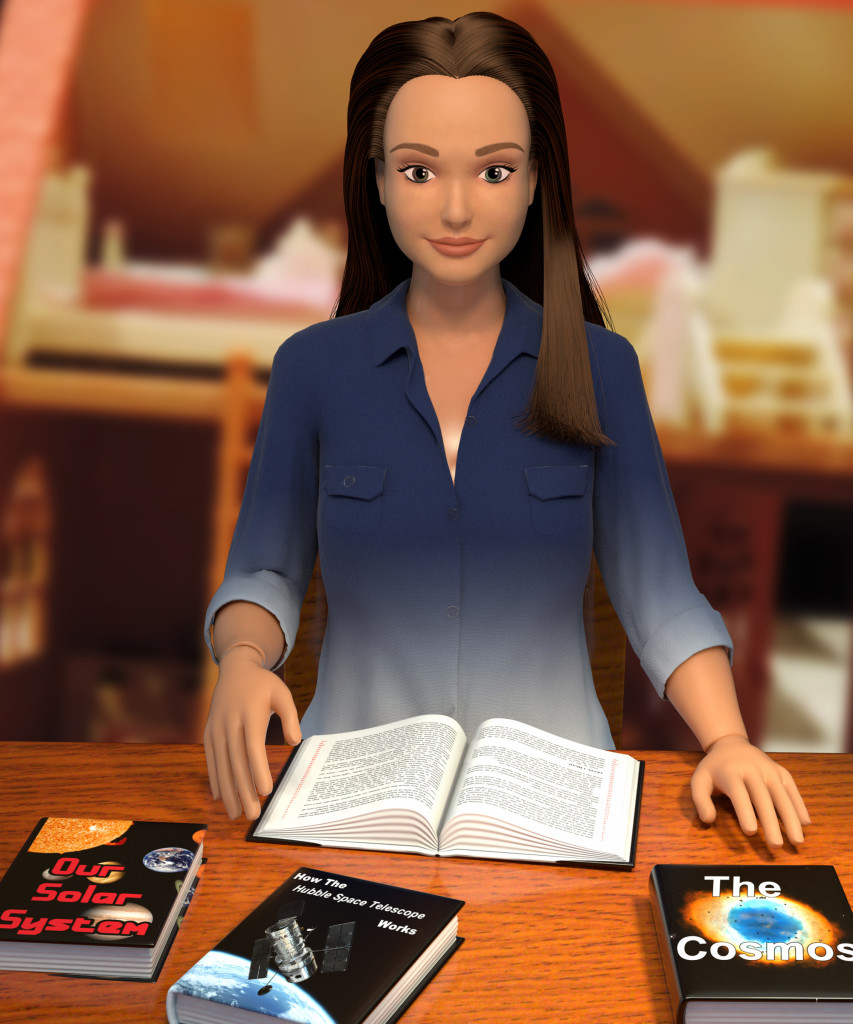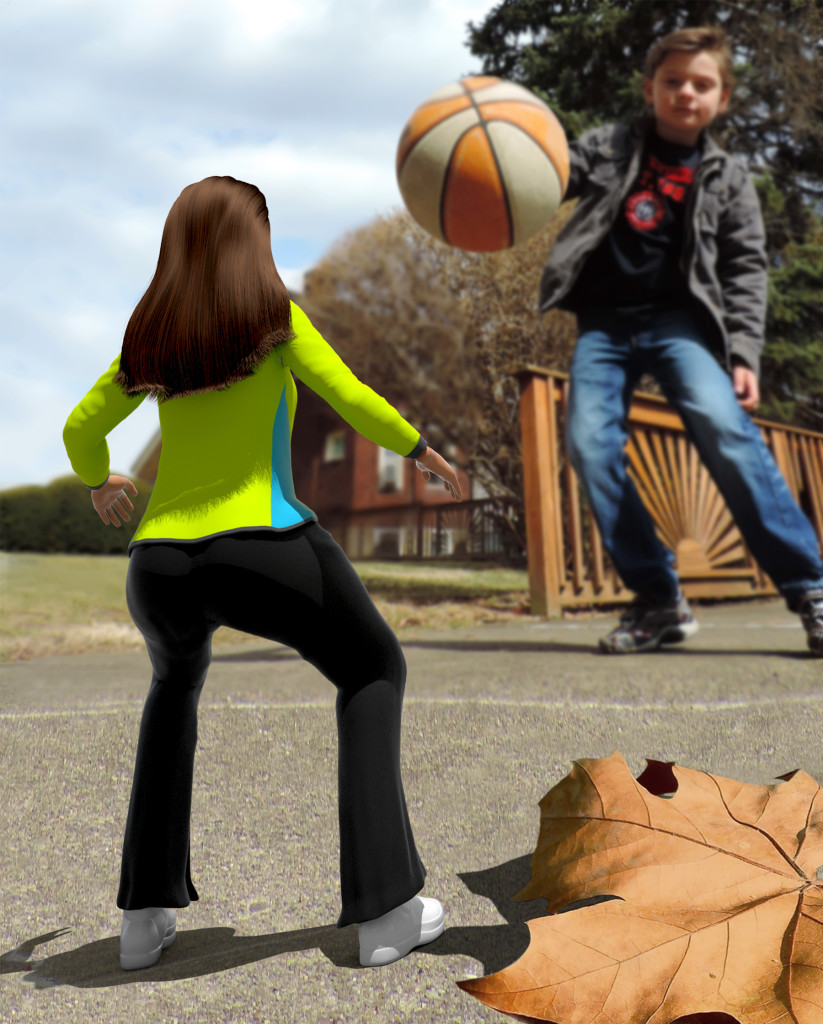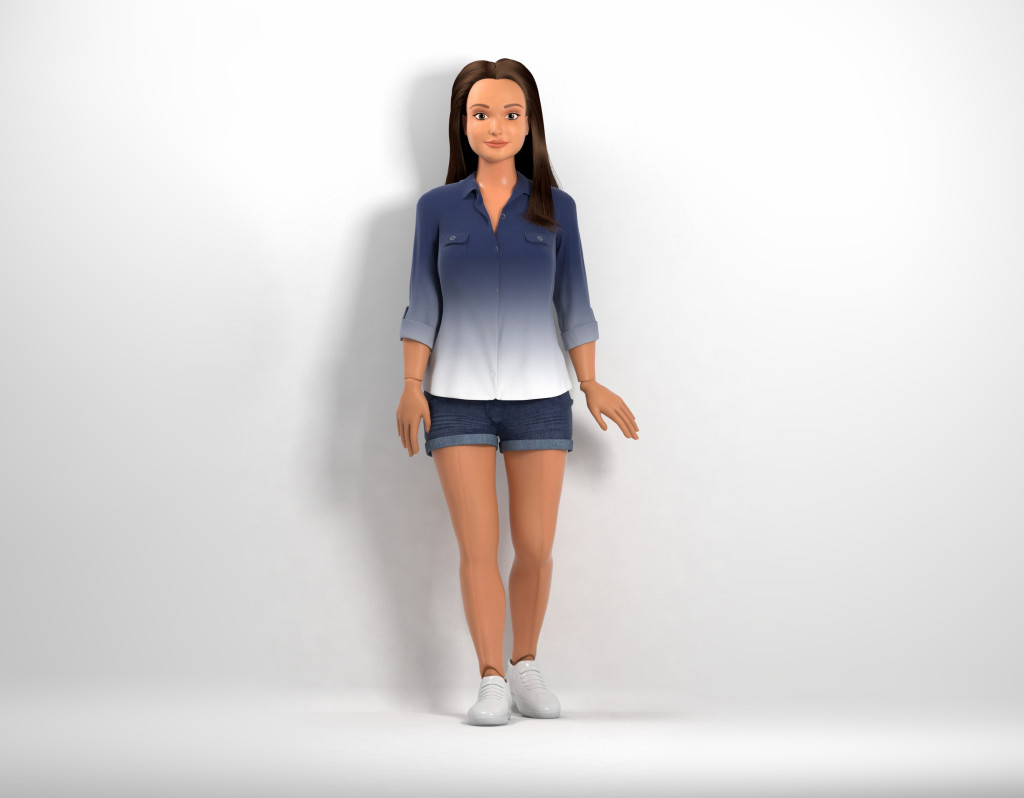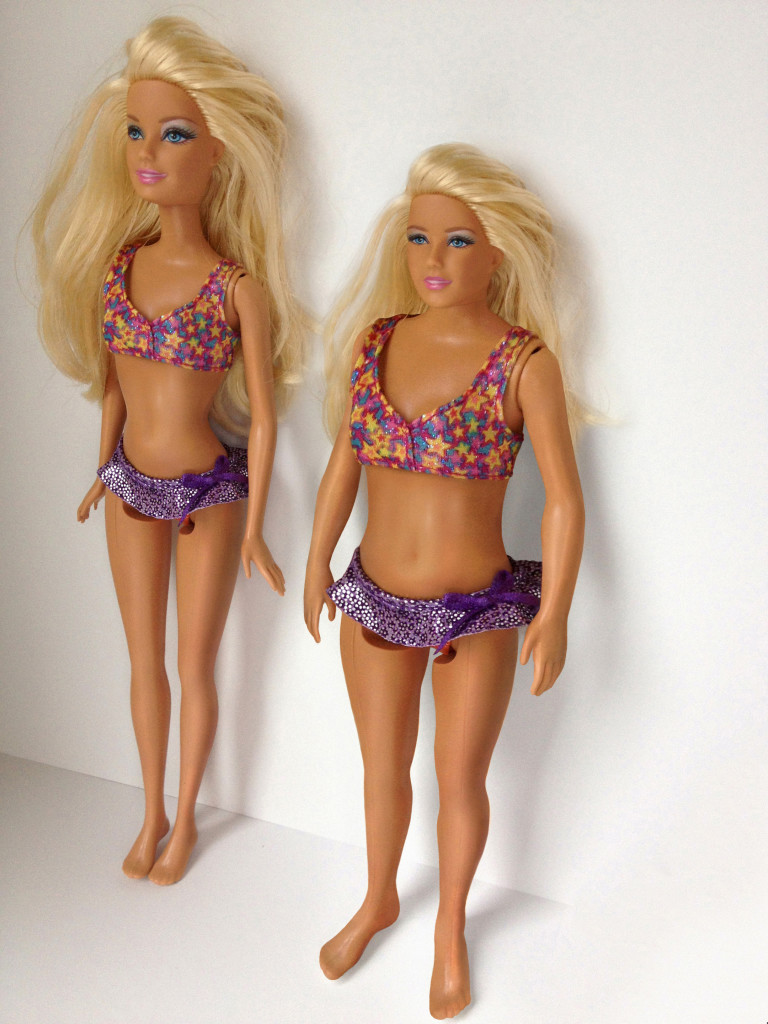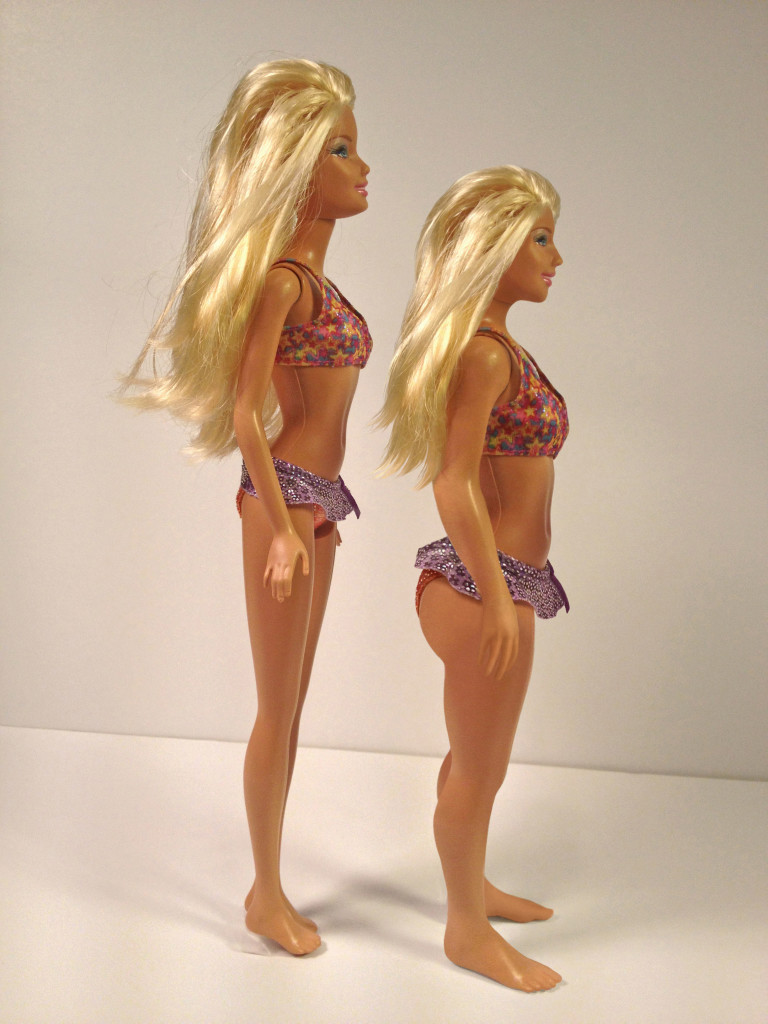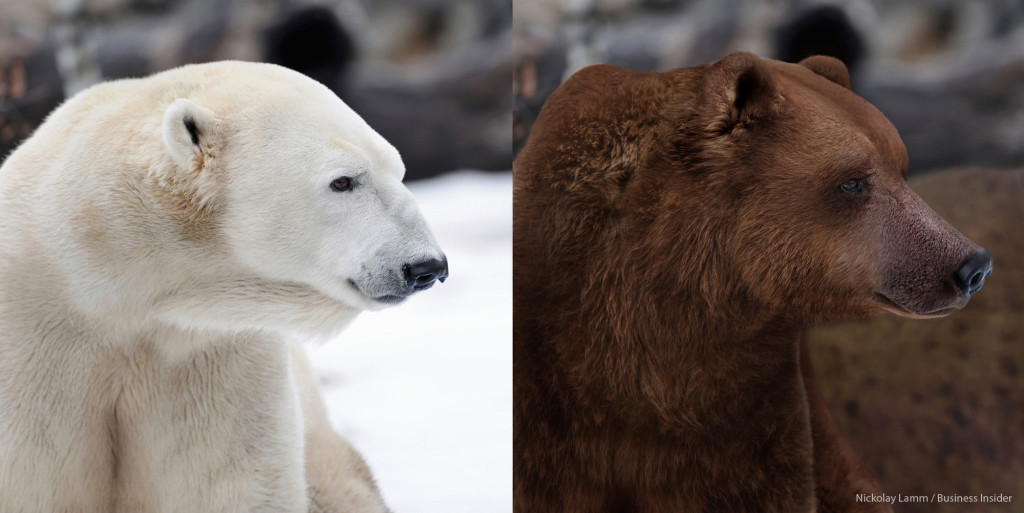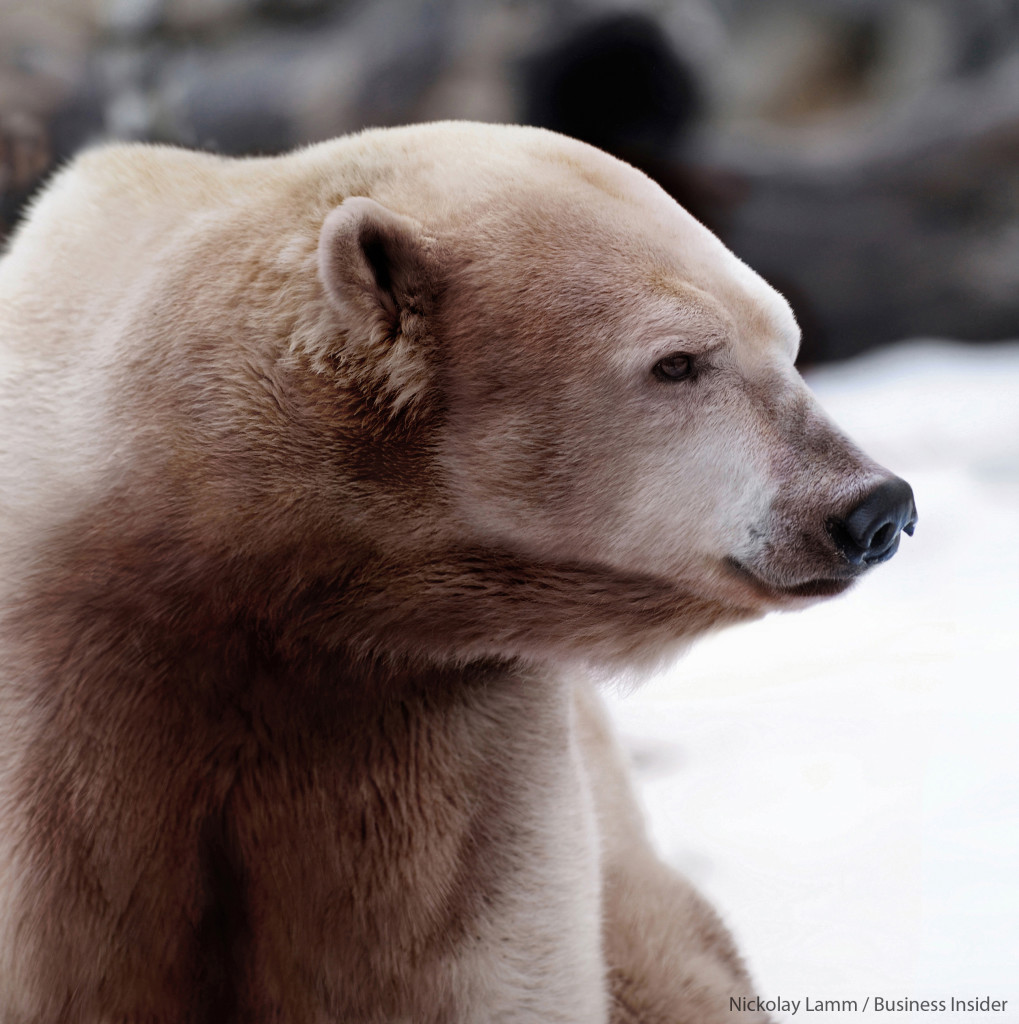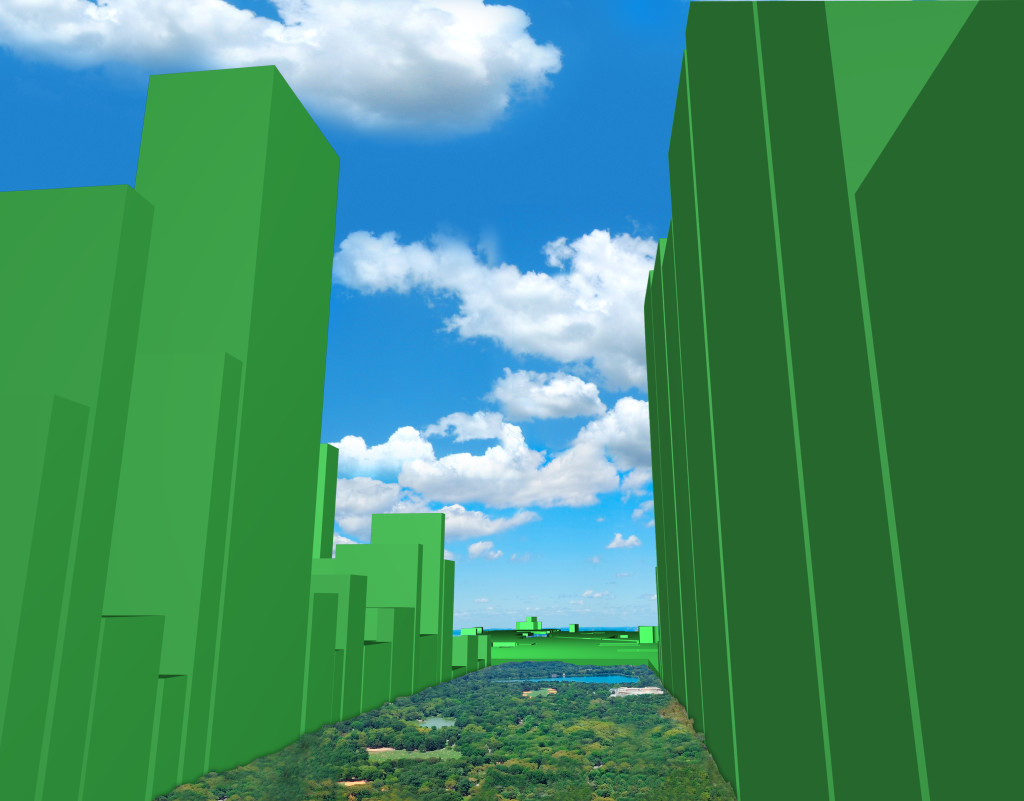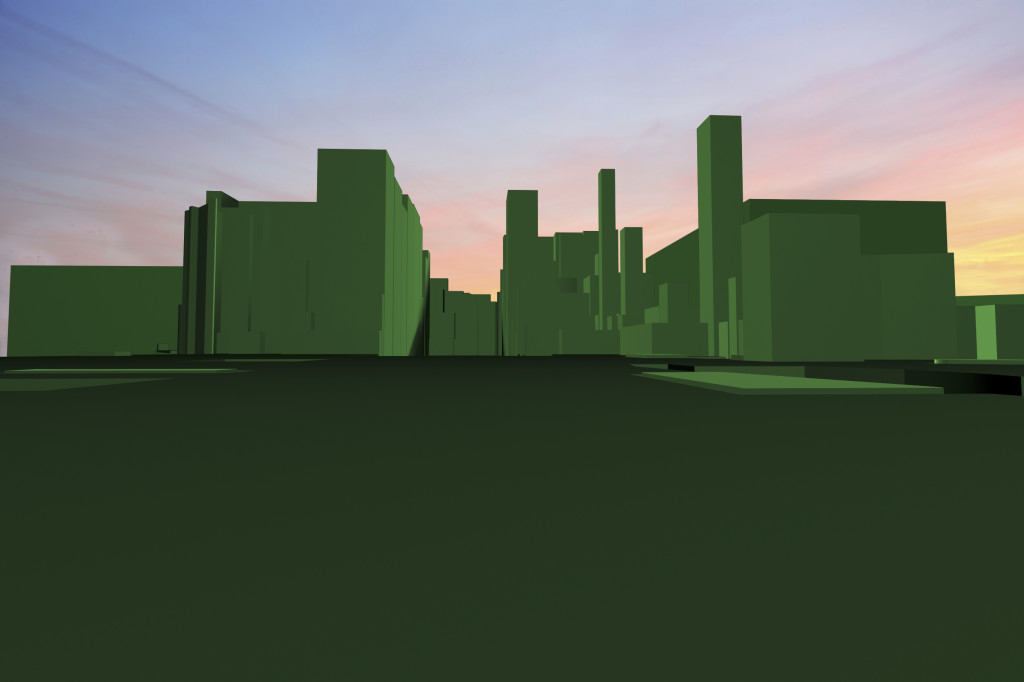I’ve never written a book before, or anything close to it.
But I figure it’s better late than never.
I’ve had people ask me how to launch a product on Kickstarter, how to go “viral” in the news, or how to get their online business started.
I’ve never shared my stories fully with anyone because I feel it can come across as pretentious. I’m nowhere near where I want to be, and there are people who’ve succeeded on a much larger scale.
I think people are interested in your story if you “won”. But what does that mean?
Is it having a million dollars in the bank account?
A startup you sold and got rich off?
Because people who’ve “made it”, did so within a specific time, in a specific place, in a specific field.
That’s why I don’t believe I or anyone is qualified to be an expert in teaching something as unpredictable as “starting a business from scratch”.
The best advice, I think, someone can give is how to create the conditions for a laboratory which can yield something fruitful.
What are the exact tools someone, with no (or little) money, can use to test their business ideas and then turn that into a business?
How can you create as many “at bats” as possible for a potential home run?
And that’s where I think I can help.
Last year has taught me that tomorrow is not guaranteed. That there will never come a “right” time to write this.
If I die tomorrow, I’m so proud of what I did.
Mattel released dolls with different body proportions for the first time in history. Objective business observers and journalists told me that Lammily, my company, was a direct influence because it released the first commercially successfully “realistically proportioned” fashion doll.
I’ve done millions in revenue.
Illustrations I made were seen by millions of people, and used by Al Gore.
I’ve released multiple successful crowdfunding or preorder campaigns, each with at least $100K in revenue.
Most recently, I turned a failed Kickstarter launch into a business currently doing $150K/month in revenue, limited only by how much inventory I have of it, in a product category that didn’t exist before.
And there are some things I so want to write about but can’t because of non-disclosure agreements.
I’m not an engineer, programmer, graphic designer, I’m not particularly skilled in any one thing. I’m proud not because of the laundry list of things I mentioned (that was to get your attention), but because I created something from nothing. No pr agencies, no investors, no fancy prototypes, no rich parents, just me. Someone without a big IQ, as average in terms of innate abilities as you can get.
I feel like a little kid who found a REALLY cool playground. It has castles, moats, dragons, it’s just obscene in what it has! I want other kids to come and join me. And I’m 100% sure there are kids who can use the playground much better than I can.
Each time something really “cool” happened in this playground, I wondered, why the HELL isn’t anyone else doing this? Part of the reason was simply because I was the only one there, at least that’s what it felt like. But why was it just me?
Writing about what happened, it’s my way of balancing out this cognitive dissonance in my head, explaining to myself why things happened, and my way of making the things that happened more “real”. Because there’s a part of me that feels that no matter what I do, I’ll never be enough, what I found or did will never be enough, not for others, but for myself. More importantly, I feel can help someone else find their own version of a really awesome playground.
Maybe you have an idea for an invention and are not sure what to do.
Maybe you want to get some PR for your existing product.
Maybe you want to sell something online.
It’s much more than any one aspect of the process. I 100% in my heart believe that doing something from the ground up, selling something that I MADE, that I figured out how to sell, that I believe in, and build a business around, it’s the closest I will ever come to fighting a war. Not the physical aspect, but the pure purpose of it.
“I see all this potential and I see squandering. God damn it, an entire generation pumping gas, waiting tables, slaves with white collars, advertising has us chasing cars and clothes, working jobs we hate so we can buy shit we don’t need. We’re the middle children of the history man, no purpose or place, we have no Great war, no Great depression, our great war is a spiritual war, our great depression is our lives.” – Fight Club
The way modern society is set up to coddle us, I think it’s why horror movies, roller coasters, and other thrills are popular. It’s why the Squid Game Netflix show became a phenomena. Many of us want to be in an adventure with high stakes, which makes a real difference in the world. I think this scene from Gravity distills that feeling better than anything else I’ve seen. I tear up every time I watch it.
Houston, Houston in the blind, this is Mission Specialist Ryan Stone reporting from the Shenzhou. I’m about to undock from Tiangong… and I have a bad feeling about this mission. [laughs] Reminds me of a story… [the capsule shudders violently] Ahh! Never mind, Houston, never mind the story! Ahh! It’s starting to get hot in here. All right, the way I see it, there are only two possible outcomes: Either I make it down there in one piece and I have one hell of a story to tell, or I burn up in the next ten minutes. Ahh! Either way, whichever way… no harm, no foul! Because either way, it’ll be one hell of a ride! I’m ready
I feel the internet is one of the most powerful tools available to give us this missing meaning.
There’s are billion dollar industries (PR agencies, marketing companies) built on convincing people that you need to hire someone or be an “expert” in order to do this. My first (and last) job was for a company which sold marketing services to inventors.
I also think the analytical approach taught in schools on how to “market” something is dry. You’re taught that there are market segments, demographics, yes, that all exists. But it unnecessarily complicates things. Basically if you have a FUCKING awesome idea that your friends genuinely think solves a problem, that’s all the market research you need. These days, the artificial intelligence in online ad platforms is so powerful that if you are passionate about what you’re selling and have a product people want, you can make a business out of it by yourself or at the very least get enough leverage for a licensing deal. Instead of worrying about things like focus groups, the AI does all the work for you. It may find that the people who most likely purchase your product are in demographics you never anticipated. Or you may find that people use your invention in ways you didn’t think of.
These days you can hire talent, get a server, get a website, have your website seen by people who want what you’re selling, it seems so commonplace now but twenty years ago you needed an investor with a million dollars to make all these things happen. You can have the same infrastructure for less than $100 now.
My generation complains about capitalism and people paying their “fair share”, but the opportunity to play the game has never been as wide open as it is right now.
In my last ever class at the University of Pittsburgh, my very sickly and aging professor told us “at the end of your career, you want to imagine a table of people around you who you’ve helped.” It’s hopefully not the end of my career nor the end of me anytime soon. But, just in case, writing this is my attempt at doing that.
It’s also my open diary for my friends, family, anyone who cares about me. Because what I write here is, aside from what you may think of me personally or the times we share together, the most significant part of who I am, my identity, my story. And if, God forbid, some accident happens to me, I’d like to be remembered for this and not the accident I got into. I’d like to be remembered as someone who never gave up.
Something I realized about death is that the people I care about who aren’t here anymore, are, in my mind linked to how they died, or what happened to them. Maybe that’s something that will change for me as time moves on. But surely they don’t want their memory to be tied to something they had no control over? Surely they don’t want us to be sad when they think of them? I think they’d want us to celebrate who they are and what they did!
So, for all these reasons, I wrote a deeply personal and very long blog post which I simply titled “My Search for Secrets”.
Why my “search for secrets”?
Because, to me, a world without secrets, is a world without hope. And at times, my search for something elusive, something which nobody else attempted to do, is the only thing which made me feel like life was worth living. It gave me an outlet to channel negative emotions (the uncertainty of becoming an adult or the deep sorrow and grief of losing people I love) into something positive, something good.
In a sense, my search saved me from what I could have become, someone afraid of life, afraid of taking a chance, afraid of the real world, the exact person I was before I started this journey.
I wrote this blog post as a story because there can’t be a 1, 2, 3 manual for starting a business or selling something online. And if there is, it won’t lead to anything sustainable because, if something can be started with a how-to book, you’ll have too much competition. So in my story, when I use tools, I describe what they are and how I used them. They’re nothing special and are completely free (Gmail, Facebook Ads Manager, iMovie, etc).
Why
“He who has a why to live can bear almost any how.” – Friedrich Nietzsche
I want to preface everything with something that’s so obvious yet so subtle.
Often times my searches yielded dead ends, but I enjoyed the process for these dead end searches just as much as those which ended successfully. How could I not? It’s combining things like graphic design, video editing, selling, all into one big project.
Loving the process, like a hobby, I found, is a good starting point.
But the second gear I needed to break through the dead ends only came when I was doing it for a reason larger than my own selfish desires or for reasons which touch my identity to the core.
A Kickstarter to make action figures based on senior pets and pets with disabilities. A heartwarming idea. But I did it because I really wanted another ‘viral’ project. I wanted the dose of “glory” that it would give me. Hardly the touching backstory that I advertised. And the project failed.
A doll that’s based on realistic proportions so that girls and boys can have realistic expectations of what women are. That’s near and dear to me because I could relate to that on a deep level. That project went really well.
Sometimes I combined the purpose of a project with the purpose of trying to impress someone. Call it childlike, call it immature. But I vividly remember a book which interviewed founders of companies, and all of them admitted that there was a woman who was behind what they did. Maybe, from a Darwinian perspective, all the skyscrapers, big companies, are just males sprouting their colorful feathers in hopes of finding a mate. Or maybe, it’s much more than just “impressing” someone or showing off my feathers. Because sometimes the person I thought about, became a light. When all was dark, that one person became the only rational reason for believing that there was a light that can save me from this darkness. That person became the reason for keeping it going.
Another “why?” layer was my own self esteem. I wanted to transform myself from someone afraid of looking people in the eye…to someone that’s the polar opposite of that. Someone who is confident not because he reads self help books, but because he DID things. I wanted to respect myself.
Another “why?” was death. For most of my life, death was an abstract thing. I drove by cemeteries without a second thought. I was lucky enough to feel, truely feel, its weight a little under two years ago, at a relatively old 31 years of age.
How can she die? How can someone so young, so full of promise, die? How can someone who contained your thoughts everyday die?
How can she die? How can my best friend, my rock, my Grandma, my second mom, die?
Why them? Why not me?
I think society, with its structure, routine, mass events, it creates this illusion of order and safety. But the blue sky is just a thin veil over the stars being destroyed, black holes swallowing planets, and stars millions of times bigger than our own. For myself personally, creating an order out of chaos, out of things which aren’t meant to be connected, it’s how I reverse that sense of pure helplessness from grief. And to be intimately acquainted with just how close I am to death, at all times, despite how “healthy” or “safe” I am…working far more than average is not the worst thing to happen to me.
Maybe, in a way, working on something which has the potential to bring about massive positive change, it creates a potentially amazing and exciting future. And by working to create this future, even if it never happens, I can convince myself that my life ahead is worth living for, something to wake up for. Something I need because I miss the people from my not too distant past too much. Knowing a future exists without them is heartbreaking. I now know why some people say they don’t want to live forever, because the pain of losing those you love is too much. And maybe working on this “exciting” future is a form of nostalgia, in reverse.
Reading the above paragraph just now explains to myself why I could tone down on my crazy driving, and could be nicer to employees in other companies who aren’t efficient and are just trying to do their job.
I’m trying to protect that future, niceties and rules be damned.
Basically, whenever the “why” to what I was doing was not solely for myself. That’s when magic happened. Because the 80 -100 hour work weeks, the small investments I had to make, and/or the constant thinking of how to solve a problem, paled in comparison to what I was trying to accomplish. My regret of not doing EVERYTHING I can to make it work and thinking about that decision when or if I’m older, is something that scared, and still scares me.
I really feel there is no way around this “why” paradox. I can say I want to be a famous musician. But what I really want are the rewards associated with it and not actual “being a musician” part, which is far less glamorous.
The “why” is the rocket fuel, the sense of delusion that’s needed when things go wrong…or when seemingly nobody believes in me, including myself, I do it anyways because it’s the right thing to do, the thing which feels right.
Low Point
I gasp for air but I can’t breath.
“We have to get to the hospital. Something is wrong.”
My mom. “You’re fine, you’re just having another one of your episodes.”
“It’s for real this time.”
My heart starts racing as if I just finished a 40 second sprint. I’m having a heart attack.
“We have to go to the hospital. NOW!”
My brother and mom drive me to the hospital. My brother is going through red lights in Oakland. My body starts becoming numb. My hands and arms curl inwards and I can’t feel them. I look like I’m frozen in the middle of the worst dance move in the world.
I start panicking even more.
We finally get to the ER at UPMC Presbyterian and on the hospital bed I see a nurse. I yell to her, “KISS ME!!!” Yes, my dating prospects had gotten so low that I figured, in my last day on earth, I can steal my first kiss from a nurse.
She looked at me and said “I can’t do that.”
The doctor comes and and says you’re fine. You’re just having a panic attack.
I don’t believe him.
A nurse gives me an IV and within 1 minute my arms and legs go back to normal. My numb and stiff arms and legs slowly regain feeling and relax. My heart rate slowly goes back to non-sprinting speed.
If I had to pick the lowest point in my life, it was that day. I was 22 years old.
And, in hindsight, I know why I felt the way I did that day, and the days leading up to it. I felt locked in a prison of meaningless, mind numbing work, stuck in a windowless office with no exciting future, and no path out of it. And I was desperate for someone to save me, for someone else to give my life meaning, because I couldn’t find it inside myself.
Is This All There Is?
I sometimes run through Pitt’s Oakland campus, in part, to people watch. Students playing frisbee, pretty girls sunbathing. The youthful care free atmosphere takes me back to more simple times. When my biggest failures were in the form of Cs in Chemistry or sleeping during my Finance Final.
But I also can’t help but feel a sadness, a sense of injustice, because I see myself in these students and know something they will find out soon, something they already 100% know but don’t yet feel in their bones. Because when I was in their shoes, the future’s far enough to not worry about, but close and ambiguous enough to be excited about.
As a student here, the shear size and gothic architecture of the Cathedral of Learning made me feel that, no matter what, the University would prepare me for this great unknown. I mean, all of the thousands of students here (and that have already went here) can’t be wrong?
In the business school I went to, the stock ticker would sometimes replace the stock numbers with the names of those who graduated and got jobs. Successful people. I just need to get a job and I’ll be set. Nothing to worry about. “Maggie J. — Deloitte” on the ticker is in a heavenly place right now. Maggie is straight up ballin, my hero.
But something I didn’t realize then was how closely my purpose, my meaning was conditioned by years of schooling.
In school, everything is so laid out for me, so crystal clear. I just need to complete my predetermined list of things to do, every semester, and that will lead me to some ambiguous place of happiness.
But once this orderliness was replaced by an endless stream of time, once the ambiguous destination for happiness was replaced with the realization that no such place exists, I had an existential crisis.
And I see the effects of this all around me. Friends who feel lost. Acquaintances who quit their jobs to travel the world or go into completely new fields. It’s something I think few people actively talk about because few people want to admit their life is going on completely the wrong path. Instead, we post on Instagram, Snapchat, and Facebook, how great everything is.
So, what is the solution?
I think many people are okay with their jobs being their jobs. Not something they particularly look forward to, but something that they just…do. They get happiness and purpose from their family, friends, hobbies, traveling. And that’s a life I wish I had when chaos and, what feels like, heart attack inducing stress rains down on me in buckets.
But I think many in my generation, millennials and younger, are hungry for their working lives to have a purpose. For what they do to be a direct extension of who they are.
And for myself personally, there has been no greater tool than the internet to make that happen. I believe anyone who has a passion for something can make a business out of it online. But schools still function as if it’s 1996 and the only way to a future is through textbooks, internships, and getting a job. A function that is built to serve the needs of the highschool-college-corporate complex. It’s a beautiful system that’s efficient in getting the most amount of people jobs. But I don’t think it caters as well to people’s individual talents or passions, skills that can find a home in the infinite online marketplace.
I’m not saying people don’t get meaning from having jobs. I know someone who LOVES being a teacher. I know someone who LOVES being a lawyer. I know someone who LOVES being a doctor.
I’m simply suggesting that the internet can provide an alternative, overlooked path, that’s simply not talked enough about. And it’s not just an alternative in the sense of an alternative career.
You know that feeling you have as a kid that anything is possible, that anything can happen? When I worked in downtown Pittsburgh, my child-like naivety that I still had as college student was slowly being replaced by the realization, “wait, this is all there is? For myself and everyone in my position?”
Since that panic attack, I’ve made it a personal mission to make that answer be…
No.
There is so much more.
There has to be!!!
Otherwise, what’s the point in getting up everyday? So I can look forward to getting wasted on the weekends like my coworkers?
In hindsight, had I liked my first job, I wouldn’t have these existential questions. Or maybe I’m just not built for ANY job, like a wild child who can’t be tamed?
I desperately want my life to have meaning, to LOVE what I do. To feel the same infinite possibilities I felt as a child or even as a college student. And it felt that everybody around me had just given up.
Why did it feel that everyone around me gave up?
I feel Peter Theil in his book Zero to One explains it better than I could…
Kaczynski argued that modern people are depressed because all the world’s hard problems have already been solved. What’s left to do is either easy or impossible, and pursuing those tasks is deeply unsatisfying. What you can do, even a child can do; what you can’t do, even Einstein couldn’t have done.
Why has so much of our society come to believe that there are no hard secrets left?
1. It might start with geography. There are no blank spaces left on the map anymore.
2. By definition, a secret hasn’t been vetted by the mainstream. If your goal is to never make a mistake in your life, you shouldn’t look for secrets. The prospect of being lonely but right — dedicating your life to something that no one else believes in — is already hard.The prospect of being lonely and wrong can be unbearable.
3. Third is complacency. Social elites have the most freedom and ability to explore new thinking, but they seem to believe in secrets the least. Why search for a new secret if you can comfortably collect rents on everything that has already been done?
4. As globalization advances, people perceive the world as one homogeneous, highly competitive marketplace: the world is “flat.” Given that assumption, anyone who might have had the ambition to look for a secret will first ask himself: if it were possible to discover something new,wouldn’t someone from the faceless global talent pool of smarter and more creative people have found it already? This voice of doubt can dissuade people from even starting to look for secrets in a world that seems too big a place for any individual to contribute something unique.
Theil goes on to say that if there were no more secrets left in the world then injustice would cease to exist. Because if the world was fully just then all its problems would already solved by either businesses, governments, or other organizations. But signs of injustice are all around us, proof that the people at the very top of organizations (leaders of colleges, CEOs, politicians), haven’t figured it out. There is no reason to respect society.
I’ll let Tim Urban, of WaitButWhy.com, take it even further…
Not respecting society is totally counterintuitive to what we’re taught when we grow up — but it makes perfect sense if you just look at what your eyes and experience tell you.
There are clues all around showing us that conventional wisdom doesn’t know shit. Conventional wisdom worships the status quo and always assumes that everything is the way it is for a good reason — and history is one long record of status quo dogma being proven wrong again and again, every time some chef comes around and changes things.
And if you open your eyes, there are other clues all through your own life that the society you live in is nothing to be intimidated by. All the times you learn about what really goes on inside a company and find out that it’s totally disorganized and badly run. All the people in high places who can’t seem to get their personal lives together. All the well-known sitcoms whose jokes you’re pretty sure you could have written when you were 14. All the politicians who don’t seem to know more about the world than you do.
And yet, the delusion that society knows shit that you don’t runs deep, and still, somewhere in the back of your head, you don’t think it’s realistic that you could ever actually build that company, achieve that fabulous wealth or celebrity-status, create that TV show, win that senate campaign — no matter what it seems like.
Sometimes it takes an actual experience to fully expose society for the shit it doesn’t know.
I wrote this blog post because I want to share these types of experiences, my search for secrets.
My experiences started small, but layer by layer they grew, and I got more and more confident in taking larger and larger risks. My leaps of faith grew larger and larger as well. It’s given me confidence, an everlasting hope, and a belief (a true in my bones belief) that anything is possible, that has permanently changed how I view the world.
If life was a video game, before my panic attack, I felt like Pac Man, in a walled maze, chasing something I didn’t particularly care for and not knowing why I was chasing it. Several years after, life feels like Grand Theft Auto, I can do anything (save for anything illegal!).
Glass Figurines
In highschool I was very very shy. To the point of not being able to look people in the eye or say “how are you?” I was afraid that when I said “how are you?”, the other person simply wouldn’t respond because of how unimportant and insignificant I was.
Because I needed to make some money and could not bare to work at an ice cream shop, I decided I’d start an online business. Plus, it made me feel cool. I wasn’t just a loner in highschool, I was a guy who had his own business! Or at the very least I could tell that story to myself.
I googled “wholesale store” and maybe on the 5th or 10th page found a website selling wholesale glass art. I saw eBay’s completed listing and noticed that people were actually buying this stuff! So, I placed an order for $200 from the wholesale store and began selling it on eBay. I took BEAUTIFUL pictures of the glass, I had so much fun opening the boxes from the wholesaler, making the eBay listings, and shipping it all out.
One of the products I sold were Rabbi glass figurines. Yes, figurines that looked like Rabbis or caricatures of one. And in hindsight, I’m not sure if they were made by some anti-Semitic Russian. My being a Russian Jew was overshadowed by the excitement of selling.
I still remember my first sale. That sense of pride, that feeling that I, a shy little boy, can still sell something, it was so empowering!!!! Someone wanted what I made! It gave me such a feeling of acceptance.
Before long I was selling everything from shower panels to led under car kits to faucets. I spent hours browsing alibaba.com (a site where you can buy direct from wholesalers or manufacturers) and completed eBay listings to see what I can resell. I remember staying up late at night, after my homework was done, to see what I can resell.
It was pretty simple: look through random items on Alibaba and compare Ebay’s completed listings to see if a profit can be made after taking into account the cost of the shipping from China and the cost of the product itself.
At one point I felt I was a “real” businessman, a man of business, wheeling and dealing. Now was time to “Think Big and Kick Ass”, just like my inspiration, Donald Trump. He said I should do so in his book, which my Grandpa bought me in 2007.
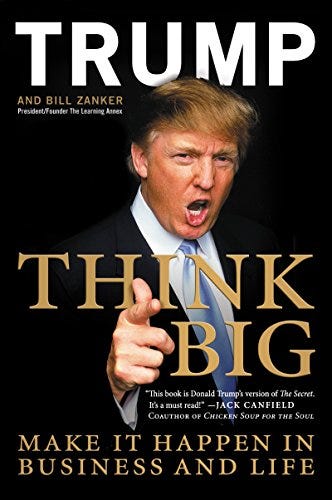
When I needed to send money to my Chinese suppliers, I went to Western Union at Giant Eagle. I remember one of the clerks gave me a weird look and said “Honey, are you SURE you want to do this.” I said “Yes, of course.” She sighed and put the the transaction through, thinking that this kid had just been scammed out of $2,000.
I turned $300 in birthday money to $10,000 within about a year. I remember the pride I felt when I shipped out 40 or so LED undercar kits, my Grandma seeing all the orders that I was making. I don’t know why but I remember my Grandma mentioning how hard the postal employee worked to get out all my packages. She always appreciated the little things in people (and could read them like a book) but she always saw the big picture.
Despite what I already did, I needed to “think bigger”, like The Donald.
Nothing less would do.
So, I spent all the $10,000 on everything from faucets to shower panels, to a wooden sauna. Big money was going to be made here. The truck arrived. I excitedly put it in my mom’s garage. Until I opened the boxes and found that most of the shipments were damaged and uninsured. I lost almost all of it. $10k evaporated somewhere between Beijing and Pittsburgh.
Despite my failure, I loved the process, the experience taught me that the internet is something I can use. That it’s something I can use to build a potential future.
I think there’s something about coming from an immigrant family…a sense of grit which I just assume is a way of life for everyone, but which I later find out, as an adult, is exceedingly quite rare. There’s no generational wealth in the form of passed down real estate or investments, no connections.
So, when I saw my Grandpa mailing hundreds of envelopes or going on countless business trips, learning English after living in Russia his whole life….
Or when I saw my mom do everything from selling European gloves to cleaning houses….
Or when my aunt was a resident doctor in Oakland, running around like a mad dog…
Or when my Grandma was faxing me and my brother additional math homework, so we could get better grades. (Oh, how I dreaded that sound as a middle schooler! But how I appreciate her efforts so much as an adult.)
I didn’t think much of it then and didn’t know how to describe it, even though I felt it. The feeling that I have to try my best, despite my circumstance.
There’s a saying, I forget exactly how it goes.
If you have 5 drunk friends, the 6th drunk friend will most certainly be you.
I didn’t choose my family. But I am so lucky to be a “Lamm”, a group of gritty, get-it-done type people, who never give up.
MobiBell
After highschool, failures followed.
I had an idea for a business called “Bikevertise”. The basic concept was to sell advertising on bicycles in the form of led lights. The closest I came to selling it was walking inside a New Balance store in Oakland, timidly showing a flyer to the owner and him saying “good idea”. I submitted the business plan to a University of Pittsburgh “Big Idea” competition. I ended up winning a $2,000 check, but that was the only revenue that business ever generated. I was too shy to even pick up the prize at an award ceremony.
In 2011, I had an idea for a video door bell connected to your phone. The basic concept was that you put an iPod touch inside a weatherproof and theft proof enclosure, and an app on the iPod touch connects to your phone. So you press the “door bell” button on the iPod touch and, voila, you have a video door bell. I made a job posting on the freelance site called Elance.com (now Upwork.com) and paid a developer in the UK $2,500 to make a prototype. I called it MobiBell. But the project came to a standstill when someone released Doorbot. Exactly like my concept, but with more sleek implementation. Instead of using the iPod touch, they created their own hardware.
Doorbot is now called Ring, sold to Amazon for $1 billion.
I’m not saying that I would have had the business savvy to do anything similar at the age of 22, but it’s the first time I felt that my hunches were onto something big. And it gave me the realization that losing some money, maybe enough to go on a simple vacation, isn’t the worst thing to happen, not by a long shot.
Although Bikevertise and MobiBell were good ideas, they didn’t make my blood boil. I enjoyed the process of making the prototypes but was too shy of a person and not confident enough to see them through fully.
Then an idea came along which I KNEW had a market. Which I knew would sell. It was so damn obvious and I was shocked that it hadn’t been tried before. And I ended up being right. In hindsight, when connecting the dots, the idea came from doing something completely unrelated. Had I not been doing, experimenting, the idea would have never happened.
Normal Barbie
It was a normal day in the InventHelp offices, the company which gave me my first job as a “marketing specialist”. Yes, the same job which helped give me that panic attack.
“Nickolay, come in to my office,” my boss says.
“So, sales have been down and you’ve done a lot of fine work but we regret to inform you that we have to lay you off.”
I pause, say, thank you, and begin to pack my things since it’s the end of the work day. There wasn’t much to pack. I never decorated my office because it never felt like home. The people were good, but the company itself, it’s mission, I could not stand.
I was happy, I now had 6 months to find another job OR do the thing which I always wanted to do, venture out fully and completely on my own.
I began doing freelance work for clients who wanted some PR: their company’s name in major media outlets.
I came up with the idea of creating research based visual illustrations, offering them to journalists, and having the journalists credit my clients. So an NBC article would say something like “This was provided to us by StorageFront.com”, somewhere within the article. These illustrations ended up on Good Morning America, Time, CNN, etc. The result was a win-win. The journalists received something they could publish. My clients received publicity. I became so good at this that the Pittsburgh Post Gazzete and Tribune Review wrote about what I did. Journalists became more interested in who I was, rather than my clients. But as long as my clients got a mention within an article, they were happy.
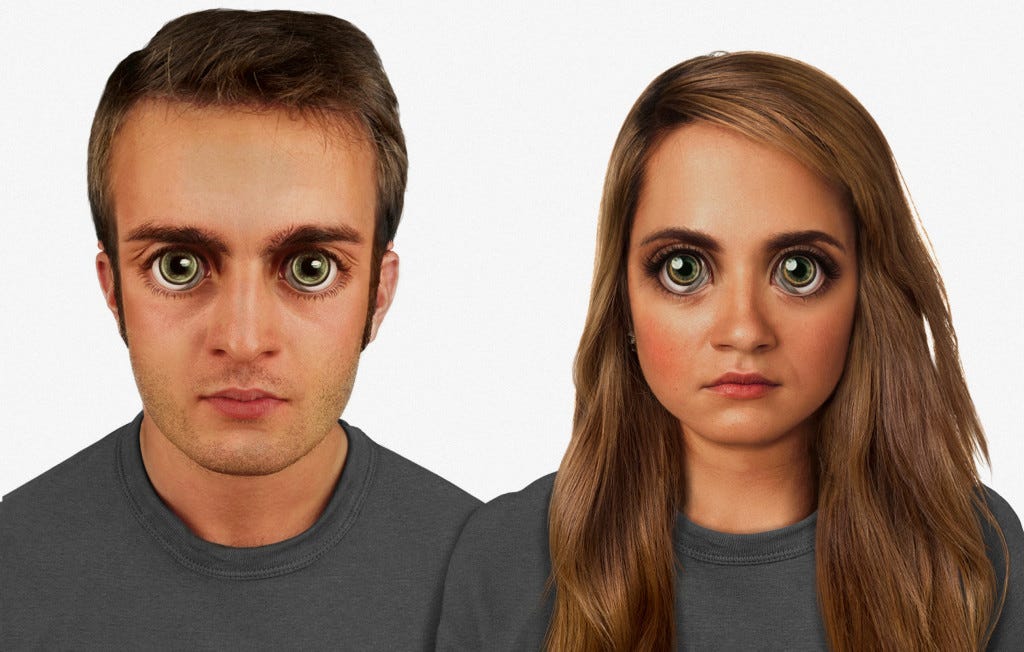
And it wasn’t hard to do.
Step 1: Think up of a bunch of visual ideas which journalists may want to publish. Something which can make for a good headline.
What Humans Will Look Like in 100,000 Years
What Cellphone Signals Would Look Like in Real Life
What Barbie Would Look Like if She Were Based on a Real Person
The key was to make the illustrative idea BE the story. To make the headline be the base of everything that came after.
Step 2: Email journalists from big publications (Mashable, Time, Business Insider) that “you’re working on so and so” illustration. If you get enough responses from journalists, proceed to step 3. If you don’t get enough responses, move on to another idea and start back at step 1.
Step 3: Email a bunch of professors to find out what the illustration should look like.
Step 4: Hire a freelancer un Upwork.com to create the illustration based on what the professors say.
Step 5: Send your illustration to the same journalists who said they’d be interested in publishing. If 2 or 3 major publications publish it, it has a chance of “going viral” because the journalists post on high trafficked webites. People may start sharing it on Facebook, Twitter, etc. If it goes viral online, traditional media outlets (TV and radio) may start contacting you for permission to publish the images.
As you’ve seen, the news isn’t news these days, its mostly entertainment. I was simply giving journalists what they desperately wanted: clickbait, albeit clickbait that you aren’t disappointed in having seen. By creating a research based illustration, I was basically giving journalists catnip. Journalists love posting visuals/videos and research, combining the two into one gives journalists the best possible chance for their article to get many social media shares, something which their bosses highly value. They also love anything that is timely, relevant, and/or perhaps shocking.
One of my illustrations was “What the Royal Baby Would Look like”. I found a student from Harvard studying genealogy on Craigslist and she let me use her name. When she realized her words were being used in Good Morning America, she could not believe it.
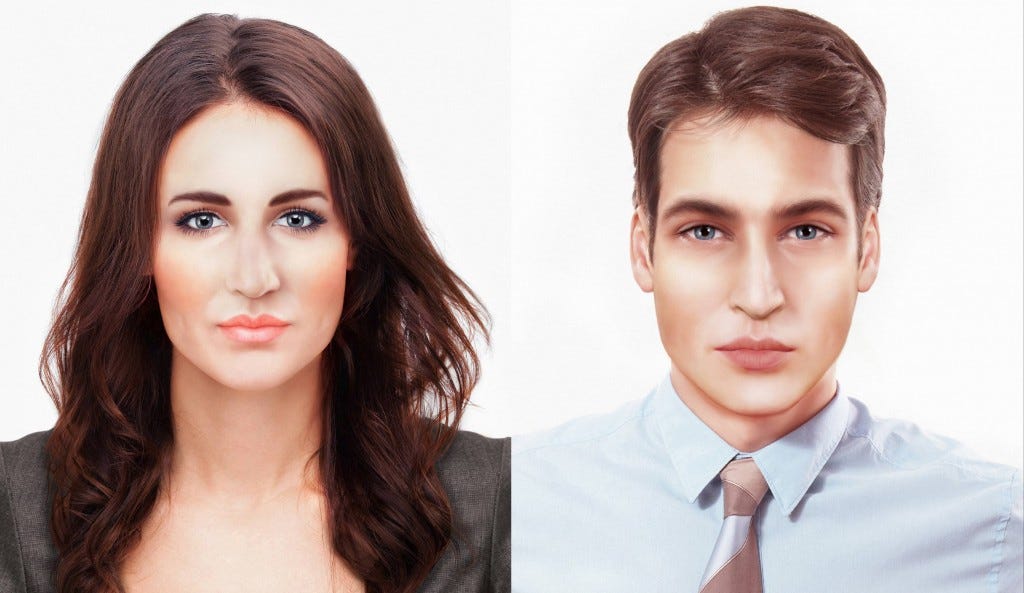
Another one of my research based illustrations was “What sea level rise would look like in real life.” Nobody had ever attempted to visualize sea level rise. Not based on Hollywood fiction, but on pure science. The result were illustrations which caught the attention of Mashable, Weather Channel, even Al Gore’s office contacted me, asking if they could use them.
In Downtown Pittsburgh there’s an office which most TV stations around the world use to conduct interviews. There was a period of about 4 months where I was in there once a month, conducting an interview on a newly released illustration I made.
Another of these illustrations was what the media called “Normal Barbie”. It was on CNN, Time, ABC, even Demi Lovato tweeted about it.
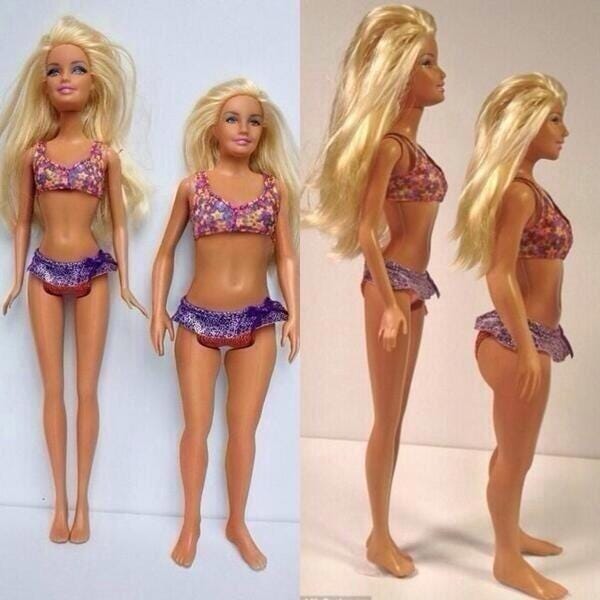
Soon, I was getting emails from moms and grandparents if this doll actually existed. I had to say no.
But I wondered…
What if I actually made a “realistic” doll? One that critics of Barbie would love, one that was finally made according to realistic proportions. This had never been done before.
I found out that crowdfunding sites like Kickstarter allowed people to fund products which didn’t even exist yet. All I needed was a…
1. prototype
2. nice video
3. backend information of how much this would all cost to make
4. way to get people to know about it.
Creating “Normal Barbie”
Prototype
After some research I found out that a prototype of a doll would be anywhere from $6K to $10K, money I did not have. So I did the next best thing. I created a visual prototype. I simply Googled “3D Modeler” and found Thomas DesJardins’s work in a Mashable post showing realistic 3D renders. He made me a visual prototype for around $3K total. I originally budgeted around $2K.
Video
I made a simple script and hired a video crew for $1K. In hindsight, I could have gotten video footage for $250 from a videographer friend, but I did not know any better. I used iMovie to edit the footage of the visual prototype and of myself. The result is this cringe worthy video.
One of the comments is “this guy values his virginity” or “this guy looks like the saddest person on earth”. Proof that if the product you’re selling vibes with people, it doesn’t matter how bad of a spokesperson you are. This was my first time in front of a camera. It took me 5 hours to shoot the footage of me talking because of all the retakes.
Backend
To find manufacture pricing information I googled “manufacture China” and found Roger Rambeau, a former Mattel VP who helped me figure out the MOQ and pricing for the doll.
Traffic
Before I had the idea to make this happen, I emailed journalists if they’d be interested in publishing my crowdfunding for a “realistic Barbie” once it was live. Because of their confirmations, I was confident I’d get traffic from them. Whether or not the traffic would convert to any buyers is something I did not know.
All 4 things (prototype, video, backend, and traffic) were ready by March 5, 2014, the launch date of this crowdfunding. I remember staying up all night before launch, doing finishing touches.
By 9:00 am I sent the final crowdfunding link to journalists.
By 10:00 am there are no preorders.
By 10:15 am I buy some dolls just so the website doesn’t look completely pathetic.
By 10:30 am I accept that I have failed.
By 10: 45 am, someone bought something!
By 11:00 am I see $1,000 in preorders.
By 11:20 am, $3,000 in preorders.
By 11: 40 am $8,000 in preorders.
At this point I yell “yeah!!!!!!!” louder than I ever have. I knew it would now win.
The crowdfunding eventually raised over $500K within 30 days, surpassing the $90K goal.
Looking back at the crowdfunding, I was lucky in the sense that I nailed the video and the traffic part of the launch on my first try. Since then, I believe I’ve learned how to remove this element of “luck” in a product launch, I’ll explain later…
From Launch to a Real Business
I think one of the misconceptions of large crowdfundings or even product launches in general, is that the business is set. But if you look at Pebble, they don’t exist anymore. A company that achieved over $20 million in preorders on Kickstarter is now, essentially, worthless.
My attempt to make Lammily a real business after the crowdfunding campaign began with a PR blitz in November 2014. I created, what I thought, were 3 newsworthy pieces of content:
- A video of second graders reacting to Lammily vs Barbie
Inna Lamm, my aunt, helped me organize this logistics of this video. I hired a camera crew and edited the footage myself in iMovie.
2. An artistic video of Lammily transforming in to Barbie
The photoshop work was done by an artist I found on Upwork.com. The photo was shot by Alexander Pathos and edited by myself in iMovie.
3. The release of Lammily Marks, reusable stickers so that dolls can have things like cellulite, stretchmarks, acne, etc. My mom made all the graphic design.
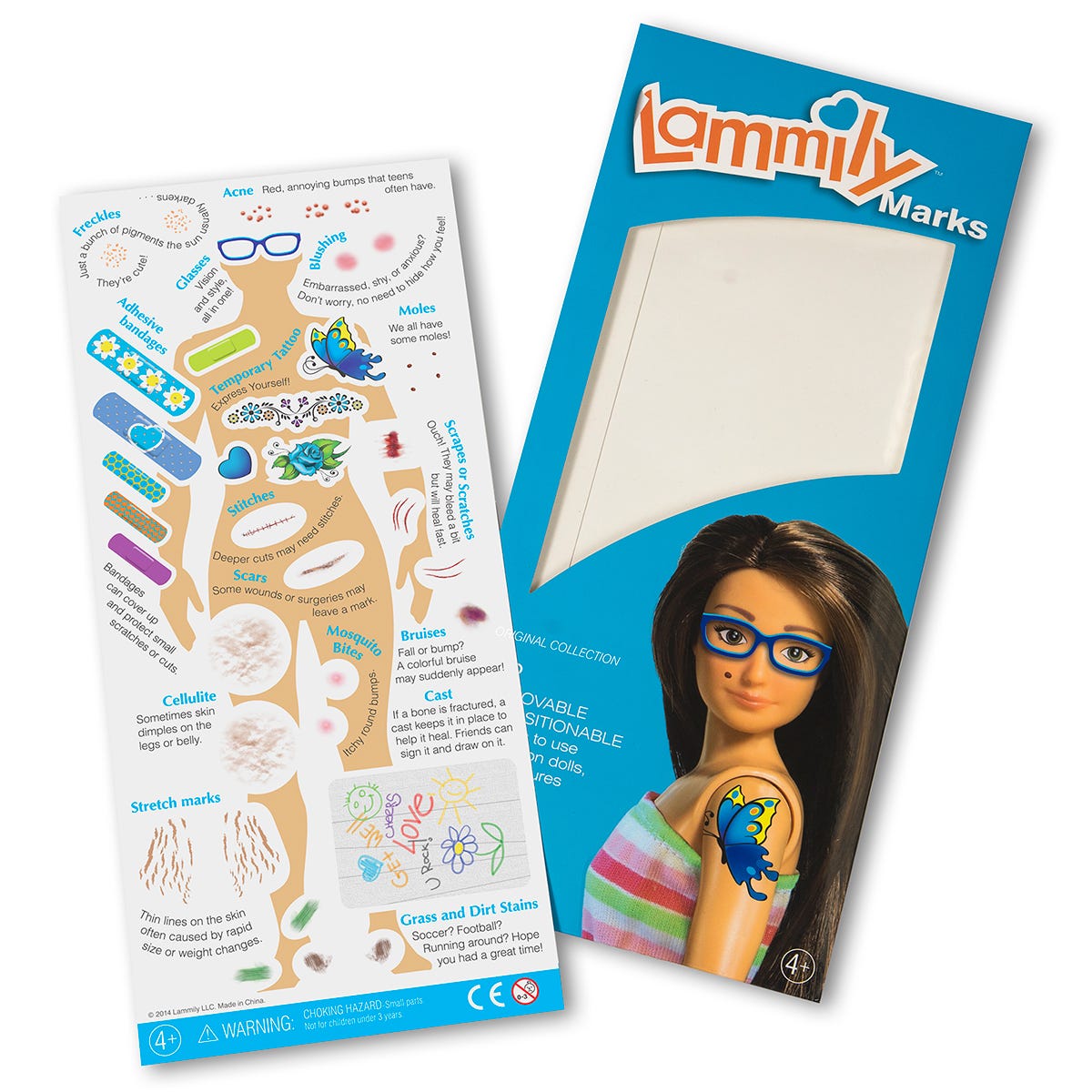
These weren’t the research based visual illustrations I did in the past. But I felt that they would have enough shock and awe to be attractive for journalists. I could already see the headlines “Normal Barbie Comes with Cellulite, stretchmarks, and Acne.” So ridiculous, and actually real, that you can’t help but click on it.
I emailed these 3 pieces content to the same journalists who covered the crowdfunding campaign about 7 months earlier.
The result was a media frenzy which resulted in a little over $1 million in sales in a span of 4 months.
And it surpassed the intial crowdfunding in terms of publicity. At one point, people who I was friends with saw Lammily and were emailing or texting me about it.
Around this time my partners said that I could sell everything for $1 million cash.
I remember my conversation with my lawyer.
“Nickolay, you should seriously consider their offer. At your age, 24, with that amount, you can do whatever you want. You should also draw up a will.”
I remember the game show “Who Wants to be a Millionare?”. The absolute illation and joy when someone actually won $1 million. But when it dawned on me that this was a choice I had, it felt absurd. Was I smart? Was I lucky? The overwhelming feeling was that if I could go from being laid off to being offered a chance to not work for a very long time, in less than 2 years, then anyone can do it.
Lammily was like a very long thesis or very long college project. The only difference was that I used a little of my own money and was playing in the realm of the internet, where you can scale your little “project” to thousands or millions of people.
I said no to the buyout offer. Part because of an over optimistic view of how business works (something like Lammily will come every 2 years, no big deal I thought), part because I didn’t want the journey to end, part because I overvalued my own business experience.
With a succesful crowdfunding and PR campaign under my belt, I felt that I “was smart”. I “knew what I was doing”. Doors were bursting open. Hasbro flew me out to their headquarters and I met all their VPs. My partners were going to invest money in a TV commercial.
With all of this going on, there was no way I was going to lose.
The end?
The meeting with Hasbro ended up going nowhere.
The TV commercial my partners thought would work, did not. It resulted in a nicely shot tv commercial but one which completed bombed when it was tested.
Though I said no to the $1 million, that was extiguished forever when Mattel released their “Curvy Barbie” competition.
Did Mattel copy Lammily?
The same year I released the crowdfunding for Lammily, in 2014, Mattel released a Sports Illustrated issue of Barbie being “unapologetic” for her thin body proportions. Their lead designer said that you can’t change the proportions because the clothes wouldn’t fit. Lammily got huge PR for what it did . The “official” story from Mattel is that they were working on ‘Curvy Barbie’ for years before it was released in 2016. Does “years” mean 2 years, 5 years? The thing is a doll, not a rocket ship. So taking away my bias, I feel it’s safe to say Lammily, at the very least, proved to Mattel that there was a market for a realistic doll.
No investor would want to compete with a corporate behmoth like Mattel. Even though Mattel’s realistic dolls still weren’t all that realistic (if you look at Curvy Barbie, the hour glass shape is nearly identical to the original), they did a good job of creating a perception that they were now “body positive”.
After Mattel released their competition the deal I got from investors didn’t materialize.
The week after everyone around me had abandoned ship, I couldn’t sleep for a week. Maybe I slept 1 hour each night. I remember feeling dead inside. I had put all my hopes and dreams on people and events outside of my control and I paid the price.
I watched the video below no fewer than 100 times in a week and put the main quote on my phone’s wallpaper. Yes it’s just a Youtube video, but maybe had I not fully internalized the message in this clip, my career as an entrepreneur would be over.
Nobody was coming to save me. I had to save the company myself.
Saving the Company
“Nickolay, I don’t know what to say, you’re out of business.”
I remember hearing those words and feeling my heart sink to the floor.
When I was walking next to Phipps Conservatory, I genuinly thought that being 6 feet underneath that patch of grass wouldn’t be so bad.
The problem was simple. Overhead was too high and sales were not enough to pay for all the dolls stored in a warehouse in Los Angeles. This was exacerbated by a contract which forced me to buy my own inventory at high rates. Signing that contract was nobody’s fault but my own.
A call from one of my business partners went something like this.
“Nickolay, how are you?”
“Good.”
“How about you Jack?”
“No good. No good! Inventory. We have dolls, thousands of dolls. You can make a city out of them.”
Jack is a very successful business man who also has a thick Chinese accent. Hearing him say those words conjured up images of Lammily dolls staying so long in the warehouse that they had time to build a school, a swimming pool, even form their very own system of government, which I assume would be democracy.
My family, mainly my Grandmother and Grandpa gave me a loan which I used to buy back inventory at a cheap price.
When family is involved, I had no choice to but to sell the dolls, failure was not an option.
I fired all consultants and decided to do the selling myself. I needed to find a way to sell without banking on PR, the only thing I knew I was good at. I needed to find a way to sell online, profitably.
Build a Tribe or Pay?
In the marketing community there are 2 philosophically different approaches.
- Build your “tribe”. AKA, build a loyal fan base on Facebook, TikTok, Instagram, etc and then eventually sell to this audience. Gary Vaynerchuk is the most outspoken promoter of this method.
2. Create a sales funnel (get people in the door, have an offer you don’t really make money off of, then make all the money in upsells) and drive traffic to it from paid ads. This is the method most popularized by Russel Brunson and his Clickfunnels software. Funnels create a systematized way to get paying profitable customers NOW.
Both are the right answer. But I’ve found that Russel Brunson’s method is by far the most efficient and safe, especially for startups which need paying customers and cash NOW. Customers from paid traffic can be used to build the tribe which Gary Vaynerchuk preaches. And because a highly efficient sales funnel can get traffic from multiple sources, your business won’t implode overnight if Instagram decides to ban your account or start sending you less organic traffic to your Instagram page. The businesses you see sprouting up on TikTok will survive long term only if they leverage their existing customers and revenue into new paid marketing channels.
Facebook Ads
When Facebook is on the news it’s usually for bad reasons. Privacy concerns, something to do with Russian meddling. But when it comes down to it, it’s one of the best advertising platforms. DollarShaveClub, Calm App, companies and apps now worth billions used Facebook Ads to aquire their customers.
You can spend as little as $5 or $1 million and have access to almost half the world. I’ve found that to use Facebook profitably, I need two things:
- A video ad that gets engagement on Facebook, that doesn’t FEEL like an ad. I had no issue here because I routinely averaged $0.10 a click since 2016. My video ad was and still is a documentary like video of Lammily story. Here it is.
This video was the result of dozens of tests. I originally shot the same exact video on my phones selfie camera and edited the b-roll footage in iMovie. Once I saw which “ghetto” test video was getting the most engagement and cheapest clicks, I improved the production value.
2. A website that converts into sales. This is the part which I needed to improve. My partner suggested I rebrand the Lammily dolls as limited edition collectors items. I also started to use Clickfunnels software to create pages which converted into sales.
(If you’re lucky, you can convert traffic into buyers by sending them to a website, with no real “sales pages”. But Clickfunnels lets anybody create a sales funnel which systematically converts a warm lead from a video advertisement into a buyer.)
And with improved cost cutting measures and sales, 2019 was a profitable year for Lammily. For the first time, I had built a stable, profitable, business, one that wasn’t reliant solely on PR to make sales.
What now?
I firmly believe that toy companies, in their current format, will cease to exist within 5–10 years. Integrating toys with the digital world is an existential problem which needs to be solved in order for Lammily to survive. I feel whoever figures this out first and markets it fastest will be the next Mattel.
Back in 2015 I had a business plan for investors. One of the sections had to do with new product development. And one of the new products was a green screen kit which lets kids toys be anywhere they wanted. Here’s exactly what was in the business plan:
A large green sheet of paper is combined with an augmented reality app on iPad or iPhone so that kids can pretend their dolls are on different planets. It works similar to how special effects are made using green screen in movies. A working prototype of this product has already been made…To make this product more intuitive, rather than selling the large green sheet of paper, the green screen paper can be part of the doll’s packaging. The app can have addons which allow the doll to be virtually anywhere (Paris, Washington D.C., etc) while educating kids about these places through a narrator. To keep inventory investment as low as possible, the product can be introduced via crowdfunding or preorder.
I thought about this idea when I was filming this homemade Lammily commercial:
I thought how much easier the commercial would be to make if I just had a green screen kit and my phone. If this worked like I wanted it to, I can be the most seamless integration of physical toys with the digital world.
I sat on this idea for around 3–4 years, mildly tinkering with it and hiring a developer to build a very crude prototype.
But only in 2019 did I get serious about it. I used the same exact steps I used to launch the first Lammily crowdfunding. This time, however, I didn’t need to use PR for traffic because I already had my email list from Lammily customers.
Along with the green screen itself, I added augmented reality. And here’s the video I made. I called this invention Teleplay.
How much money do you think this raised? $1 million, $3K?
The answer…
$3K.
A complete and utter failure.
I sent an email to my Lammily customer list and they said the product was confusing, too complicated, and too not sure if they’re kids would look it.
I took their comments to heart and made the following adjustments…
1. I removed all the augmented reality components of the product. It was too confusing. Too much too soon.
2. I spent more money on developing the user interface, which was completely absent from the first video because it simply didn’t exist.
3. I recorded video of kids playing with it.
I then tested at least 12 different variations of a new video commercial on Facebook Ads and sent the traffic from these video ads to a preorder sales page I made in clickfunnels: https://offer.lammily.com/teleplay-preorder-500
I did not send video traffic to kickstarter again because, without augmented reality, I didn’t need the funds to actually make it, I could simply sell preorders for it.
The first tests showed me that while my sales page was converting well, the video ads were costing roughly $0.80 per link click. There was no way I could sell enough preorders to cover my ad costs at this cost. I needed the cost per link click to be closer to $0.10.
So I kept testing and testing new videos. I had an illuminating discussion with a professor friend of mine. Dr. Lehman, who said I needed to get the point across in the first 10 seconds of the video. That’s exactly what I did. Here’s what the new commercial ended up like.
1,200 Yards of Fleece
Me: “Hi, I’d like to order 1,200 yards of the green fleece fabric.”
Bethany from Joanns: “Did you say, 1,200 yards? What do you need that for?”
Me: “For a toy I’m selling.”
Bethany from Joanns: “Okay, you’re going to have to speak to my manager.”
I eventually needed to buy 2,500 yards from Joanns, all their stock of green fleece fabric. I rented a large U-Haul and loaded it up with the fabric. The sun was shining and as I was driving, a wave of relief, of happiness, poured over me.
Because after the initial 2–3 years of mammoth sales from Lammily’s PR, sales slowed. I turned around Lammily but I felt that even as I was doing so, I had to solve the existential issue of technology and toys. And driving that truck, loaded with green fabric, I knew I solved it. I was not just a one hit wonder with Lammily.
In my field, in the body positive community that loves Lammily, there’s a movement of “self-acceptance” and “loving yourself”. But, I’ve found that the only way I can love myself is if my actions and corresponding results, are ones I’m proud of. I had flown high, maybe too high for my own good, and fell flat on my face through inexperience. Driving that truck, I felt I had come full circle, and finally, needed nobody’s acceptance but my own.
Teleplay doing over $160k/month in revenue. The product clearly is resonating with people, but it took about 6 months for all the pieces (marketing and product development) to come together. Moving forward my plan is to
- Extend Teleplay to include a human sized kit.
- Add an interactive component where you are the actor in a TV series, in real time.
- Scale sales to the moon.
If I play my cards right, Teleplay can usher in a new era of toy and movie creation play.
My biggest concerns are competition. Right now, nobody is doing what Teleplay is. But that will change in about 6 months or less once someone with resources sees what I’m doing. So my only path forward is to accumulate as many users as possible so that this future organization either wants to invest into Teleplay or simply decides to buy it.
Will I be right? I don’t know. All I know is that if I follow my heart and believe that something good can happen, then perhaps I’ll be right.
Hope
I look at the wall of over 100 packages that are ready to be picked up by UPS. Isaac, a friend of mine, made this wall. He works efficiently and fast, and is a pleasure to be around. I walk about 500 feet towards the laser room, where the manufacturing of the kits is taking place. As I’m walking I hear the hum of the air compressor and the sound gets louder until I see Karen, one of the new hires, working on the machine, making more and more kits.
I help the UPS driver put the packages in his truck. He tells me “So YOU’RE the guy sending all those packages. Staples told me about you. It’s really amazing what you’re doing.” I say thank you and answer his questions.
Maybe one day Teleplay will be making not hundreds of kits per day, but millions.
Maybe, one day Teleplay can fundamentally change the world of toys on a mass scale. Or maybe it can create an entirely new genre of story telling.
That feeling, that feeling that there exists some good, perhaps some magic at the end of the rainbow, not because of some external circumstance, but through sheer will, it’s the closest I feel to having a super power.
I sometimes yearn for a more traditional path. It would save me a lot of stress. But the feeling I get when something finally “works”, it feels like I found treasure in a place nobody bothered to look.
If the universe can create such awful events which, statistically, almost never happen. The pain of which never truelly leaves me. Then I can create my own events, which, statistically, should never happen as well.
If I can uncover a truth which nobody else saw, I can say to myself that no matter how numbingly painful or boring life can be at times, there’s always something amazing worth fighting for. All I have to do is try.
It gives me a feeling that I can have some control, a say, within a world that can be, at times, so tragic, meaningless, and cruel…it keeps me sane. It’s almost like my own little personal religion.
And it makes me feel that, even if I die tomorrow, I gave it 100% my all, every ounce of energy I had, for myself and for those I’ll love forever.
Tools I Used:
Facebook Ads Manager to get targetted traffic. Go on Youtube, plenty of info on the ins and outs of it.
Upwork.com to hire freelancers
Clickfunnels.com to create high converting sales pages
Books or content I recommend: anything by Russel Brunson. I’m not a natural online salesperson but he really nails it. He distills the best marketing advice into easily digestible content. Granted the only book I ever read by him is Dotcom Secrets: The Underground Playbook for Growing Your Company Online with Sales Funnels, but it was more than enough to get me going. I’ve listened to his podcasts and Youtube channel here and there.
I’d also look into TikTok Ads, it’s something that it a work in progress on my end.
Honorable mention to my ancient iPhone SE which shot videos for my ads!
Are you rich yet?
I think in any startup based movie or tv series the big question at the end for the general audience is “did they MAKE it?”, “are they rich?”
And maybe that goes hand in hand with the certainty we ourselves want if we’re going to spend a massive amount of effort doing something.
No, I’m not rich, not yet.
I think when people watch a show like Shark Tank or read about the startup world, you hear MASSIVE numbers being thrown around.
“A $10 million valuation”
“I’m seeking $500K in exchange for 5% equity.”
All of this is play money because it’s simply money investors invest in something that may not pan out whatsoever. And, often times, when a company raises something like $20 million, the founders themselves own a very small portion of the company.
E-commerce businesses can generate in the range of 8-18% net profit. So if an e-commerce business generates $1 million, $100K can be profit. And , oh yeah, what about the product development costs needed to ensure its longevity?
An e-commerce business can make you rich if you scale revenue significantly while keeping costs low or, the easiest path, be aquired by a corporation. Or transition to a subscription web based service, something which I’m working on now, not because I think it’ll make me “rich” but because it’s the best solution to keeping users engaged and excited.
I’ve read how being acquired has been the worst day of founders’ lives, because it means the “journey”, at least the one they were on, is officially over. And how rich am I already? I have my dear family, my friends and the passage of time will only take away more of who I love. If given the choice between all the riches in the world and having my Grandma back, it’s a no brainer.
Knowing I did some of the things I did, at times it doesn’t feel real, as if I’m thinking about another person.
I may not ever be rich, and I’m 100% okay with that. Because I’m already playing the game I love. I already won.
I feel intense frustration and stress, I feel pure joy and excitement, I feel anything is possible because I KNOW IT IS.
I feel ALIVE.
Epilogue…
Below are some late night thoughts I wrote which didn’t fit into the overall flow of the story above but which I wanted to add.
How to Find the Big Idea?
Remember my idea for the video doorbell? My idea was spot on, but my implementation failed.
My idea for Barbie was worthless too. But I nailed the implementation.
If you’re looking for something to invent I think opportunities are all around you. Perhaps “active serendipity” is the best way to get ideas.
I created research based visual illustrations, that lead to an illustration of a realistic Barbie doll, that lead to Lammily.
I created a movie with dolls with a printed out background, that led to Teleplay.
A chance meeting with a friend who said that the realistic doll should have “stretch mark stickers”, that led to Lammily Marks.
Those small tiny hunches, the same ones which make me think “somebody should do this…well maybe someone smart already made it and if not there’s a good reason….but maybe not…”. They may not seem like much in the moment, but they’re the seeds, which, when looking back, make me think, “HOLY FUCKING HELL.” It all started from that.
I despise when people talk about focus groups or market segments to see what people want, figuring they can “logic” their way into some brilliant idea. Because what we want is a better version of what exists. Maybe that works for a corporation mildly improving their run of the mill app, but not for something that gets you or anyone else excited.
Off the top of my head, I’ll list 3 ideas which can, with the right implementation, generate $1 million plus businesses.
An inexpensive app or device for restaurants which converts their menu to augmented reality. So that customers can visually see each menu item on their phones in AR, and, eventually, their AR glasses.
A lockbox for adults to put their phones inside while driving their car. You get points redeemable for real rewards the longer it stays inside while you’re driving.
An carpool app for long distance rides. A substitute for airplane rides between cities that are a 4–8 hours drive apart.
What if you could have a loved one, who is thousands of miles away, join you for dinner? Imagine a friendly looking device. You put your phone on it and your loved one control’s the movements of the device so that he or she can see everything. Instead of you having to awkwardly hold the phone or balance it, the device does all the work for you.
Though these are ideas which I believe can do really well, I simply do not have the same feelings of injustice and/or interest as Teleplay, for example.
If you really believe in an idea, maybe you are wary of implementing it because you think “surely there is someone smarter than me who will do this. After all, there are billions of people in this world.”
I’ve thought about this a lot. Why was it me, who first released a realistic alternative to Barbie? I think there was a narrow period of time, between 2013 and 2015 when other people or companies were working on it too. Maybe 5 other parties. From that perspective, my odds of success for a succesful launch were maybe 20–30%, not one in a million or something crazy like that. I think what I’m trying to say is that if I’m crazy enough about an idea, there are probably only 5 other people in the world who are just as obsessed with an idea as I am, so my odds of success are actually pretty high.
When I told my good friend Milt that Teleplay is on fire and thanking him for believing in it, even when the Kickstarter failed, he said “I believed in you more than I believed in the product.” And maybe he fed off my enthusiasm for it.
For me, personally, the belief that I can mold my destiny, have some say in it and not be a passenger, started when I was selling those little glass figurines on eBay. And the more experience I got, the more confident I got in taking larger risks.
And, now, more than ever, I’m thankful that I what I do, is a direct extension of who I am. I wrote all of this with the hope that someone reads it and sees that creating your own product, your own business, is something that’s very feasible and, in fact, likely, if you believe in it.
Experiments Are NOT Risks
Milt Barr is one of the most bad ass mother fuckers I know.
Instead of going to college, he opened his own electronics store and mastered selling on eBay, he became so good at it that eBay itself wrote about him in their promotional materials. He is such a big fan of Ninja Turtles that he named his first store in honor of them. He was on the front page of the Pittsburgh Post Gazzete twice, both for bad ass things. Since he started he’s consistently done millions each year in revenue. He shape shifts his business on market trends, and has always come out on top. His mind is always open to possibility and he’s a kid at heart.
My mom is a professional artist. Every blank canvas is an opportunity to start something fresh, a chance to create something that’s never been done before. Since I was conscious I could see her creating new art.
My Grandpa does long business negotiations, spending months on each one. Some fail, some succeed.
When my family moved to the US from Russia I was 5 years old. I thought we were going on some kind of vacation. To this day I’m still somewhat convinced I was mentally challenged as a kid because you’d think a kid would appreciate the significance of what was happening. I had no idea. But I did realize later. Our VERY BEING HERE is an experiment that my family took.
Every time I showed my ideas to my brother, he was just as excited about them as I was.
When my Grandparents found out I was depressed at my first job they were actively trying to help me find another opportunity. At one point I remember they were looking into a business franchise. They just wanted me to be happy and did not care about how much “prestige” I had.
I’ve shown this long blog post to less than a handful of family and friends because I wrote my heart out, it’s probably the most intimate public work I’ve made. And one of them noted that I underestimate my own “risk taking” nature, that not everyone has that.
Maybe I underestimate my own experimental environment. I never saw the people around me as taking “risks”. I saw that even if they failed, life moved on, literally nothing bad happened, at worst a micro, not a macro failure which they easily recovered from.
I think what’s special about me is not me, it’s the environment I was raised in and the people I chose to focus on. I’m not a risk taker, I just don’t see the harm in actively trying to do new things. And I think this “experimental” way of thinking can be cultivated in entrepreneurship clubs, podcasts like “How I Built This”, and hanging out with friends who try new things.
Taking Small Steps
Going from that tiny seed to seeing an idea fully realized (having lots of sales) is something that makes any future attempts 100X easier. Because it’s all a mental game, it’s so 10000% mental I feel!
I was talking to a professor of mine about Teleplay and she asked why I didn’t give up. I said that if I didn’t have the experience with Lammily, knowing that I could build something from scratch, I maybe would have.
Why did I spend 8 months on Lammily before seeing a single sale? Because I knew that I could make things go viral from my visual art projects.
Why did I consistently make my visual art go viral?
Because I made 1 go very “mini” viral. I originally started by making 3D renders of potential future Apple products (I hired someone else to do the renders). I contacted a journalist from ZDNet.com and after he published my images they went viral on virtually all the niche Apple blogs.
I think it’s like a video game with a steady progression. Each step builds a firmer and firmer foundation.
“It’s Not Where You Are Now, It’s Where You’re Going”
Mark Cuban once said this on Shark Tank in an episode I saw a long time ago.
Yes, Mattel essentially used Lammily as a free focus group to determine that they can now release a “realistic” alternative. Yes, I was pretty much insolvent. But I held onto that belief that if I just work, I can dig myself out of this hole. I felt, “Well, Mattel beat me now. But if they don’t innovate, they’re going to collapse like a house of cards and maybe they’ll either go out of business or be forced to buy me.” Reading that out loud now sounds like thoughts coming from an insane person, but I legit 100% thought (and still think) this was true. I think when things are really bad, I can either go into a deep depression or become insanely positive, there’s really no in between.
It all goes hand in hand with my second most favorite quote..
“‘You’re never as good as everyone tells you when you win, and you’re never as bad as they say when you lose.'”― Lou Holtz
Thank You
I’d like to thank my mom. She did all of the Lammily and Teleplay design work, has given me sound advice, and, most importantly, been my loving mom.
My Grandma and Grandpa. Without you I wouldn’t be doing what I love.
Milt. For giving me belief.
My brother, for being my side kick.
For anyone who helped with Lammily and Teleplay. Inna, Emily, Bucky, Matt, Clare, Mollie, Danik, John.
Barbara Como. You were my light, the one I thought about everyday.
A special thank you to my Grandma, Tatyana Lamm. She passed away last year in March. She was and is my rock and I love her very much.
Amy, I love you.
Email me at nickolay@lammily.com if you ever have any questions or just want to talk.
